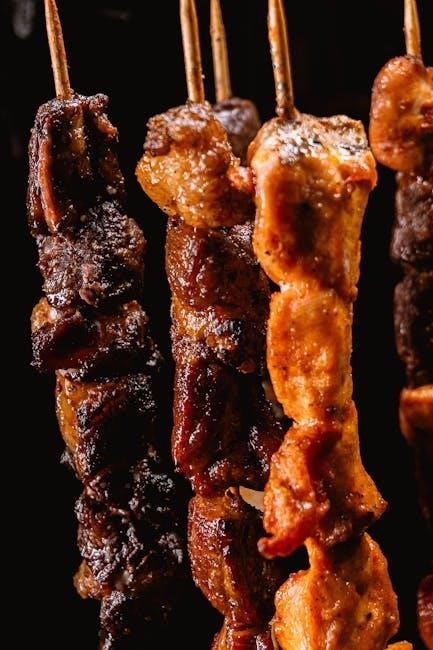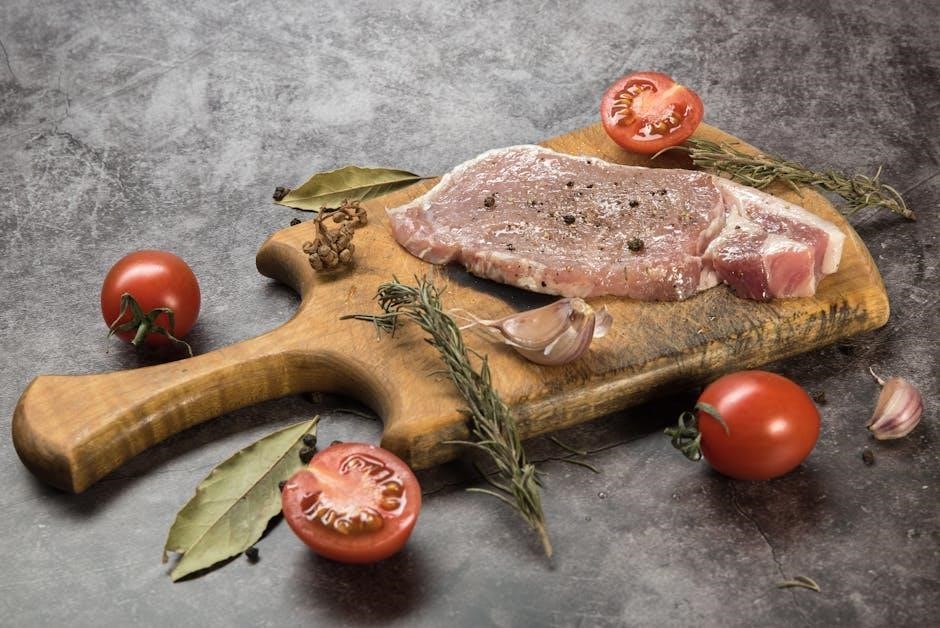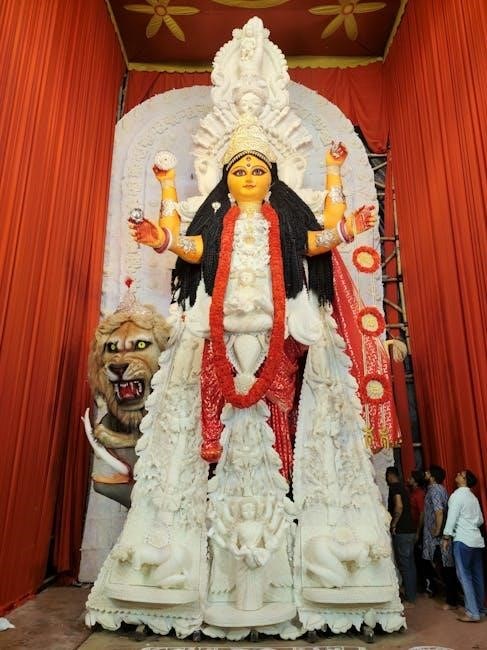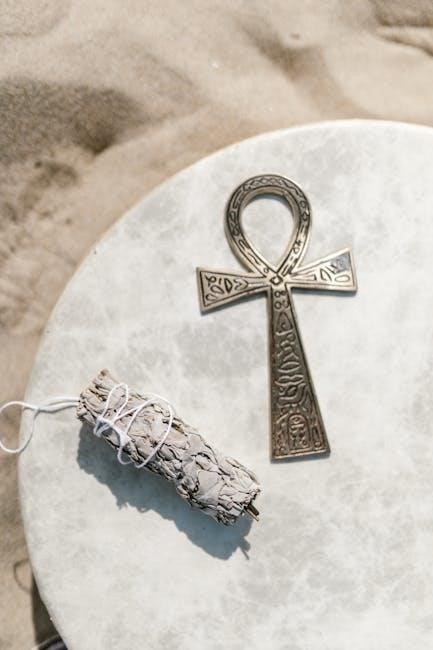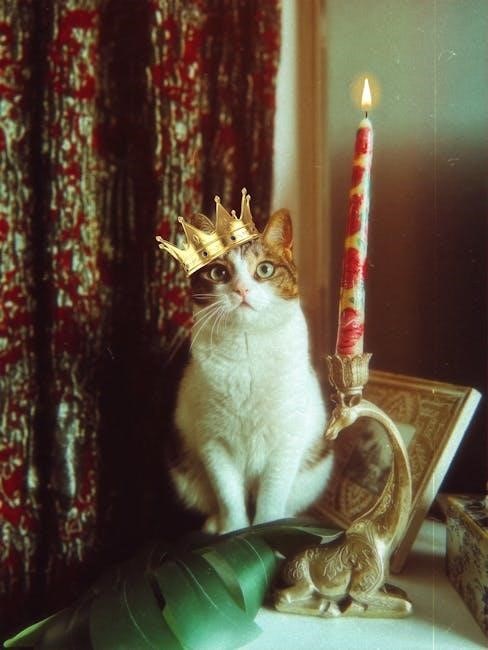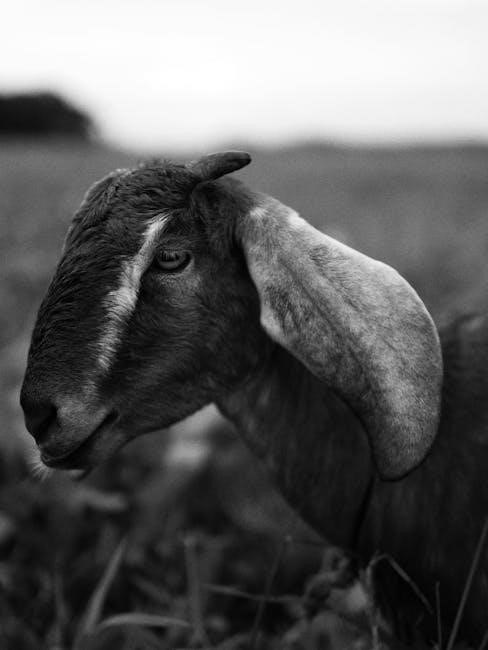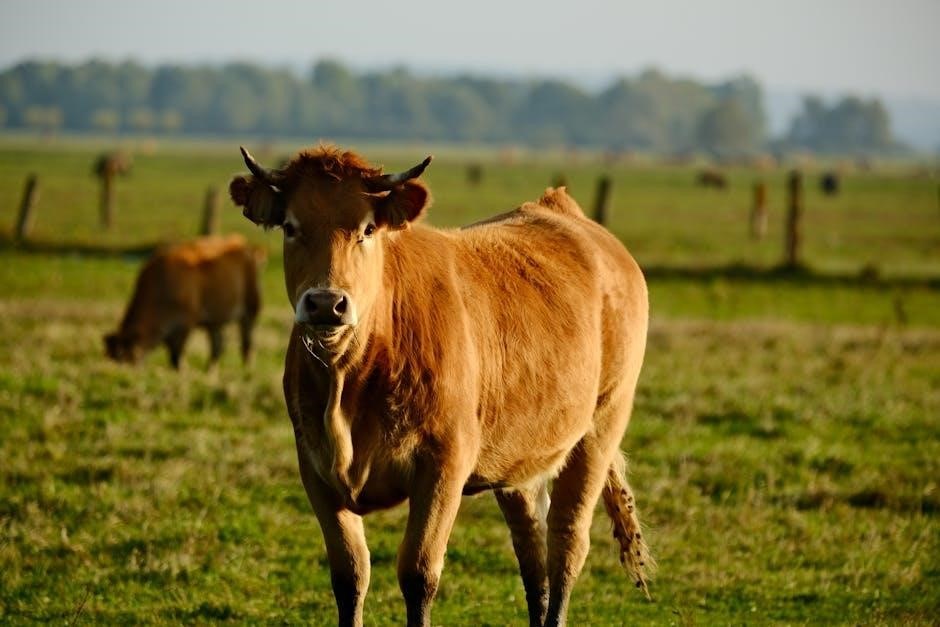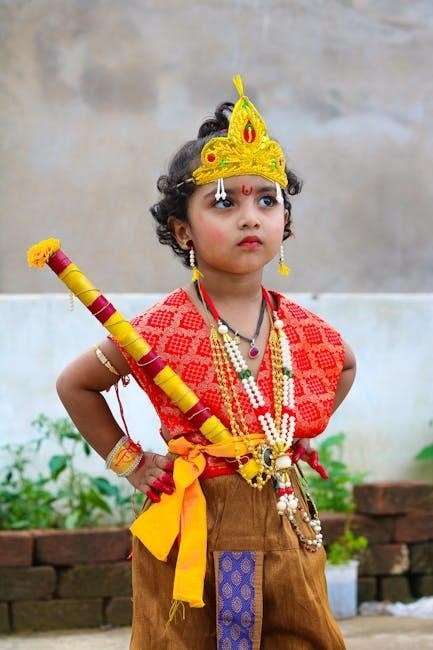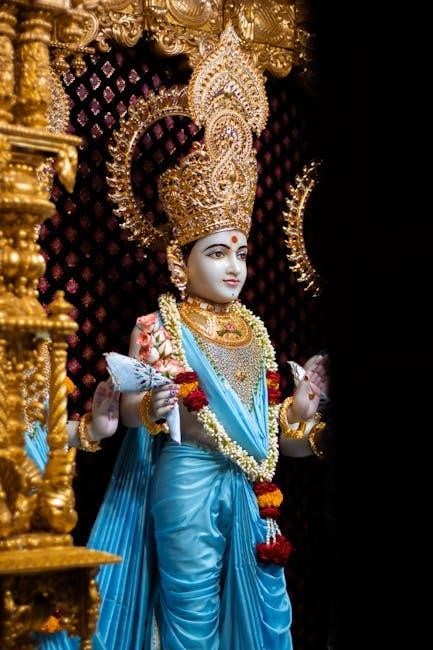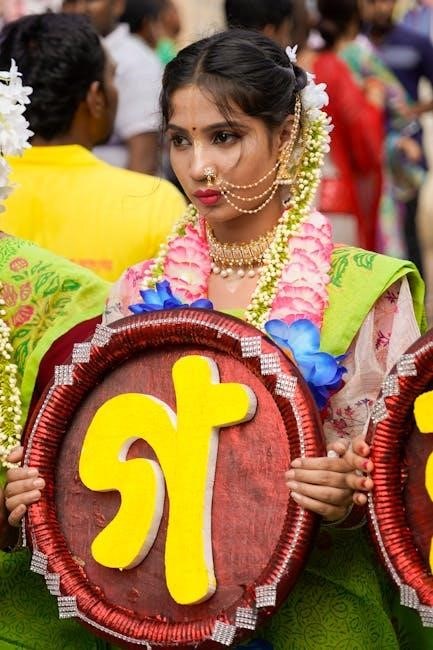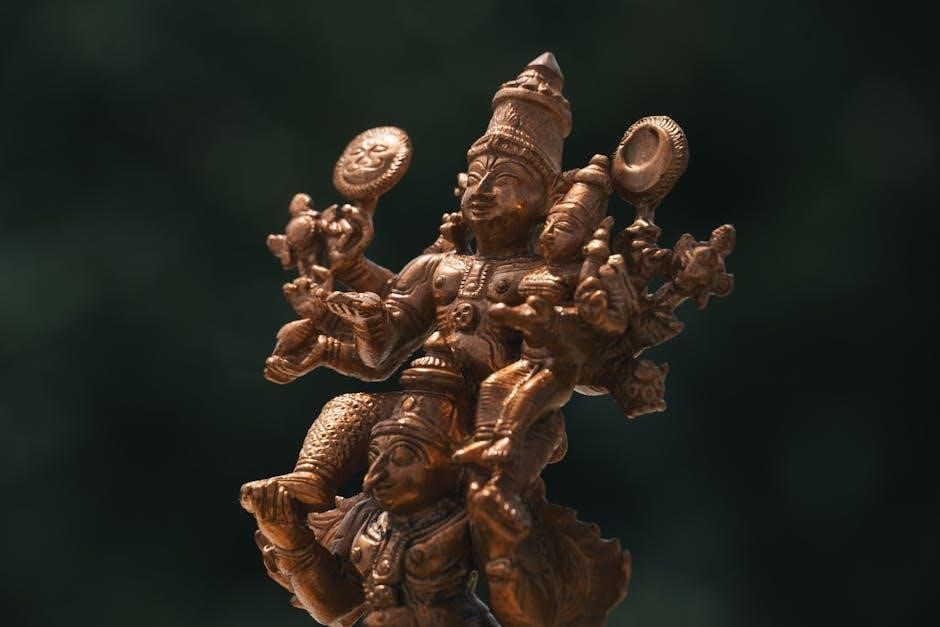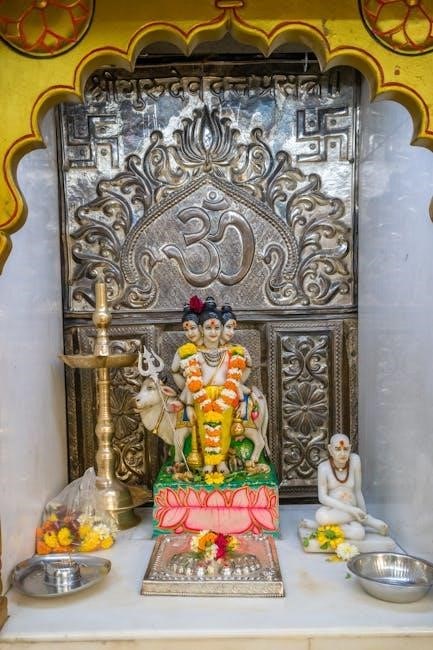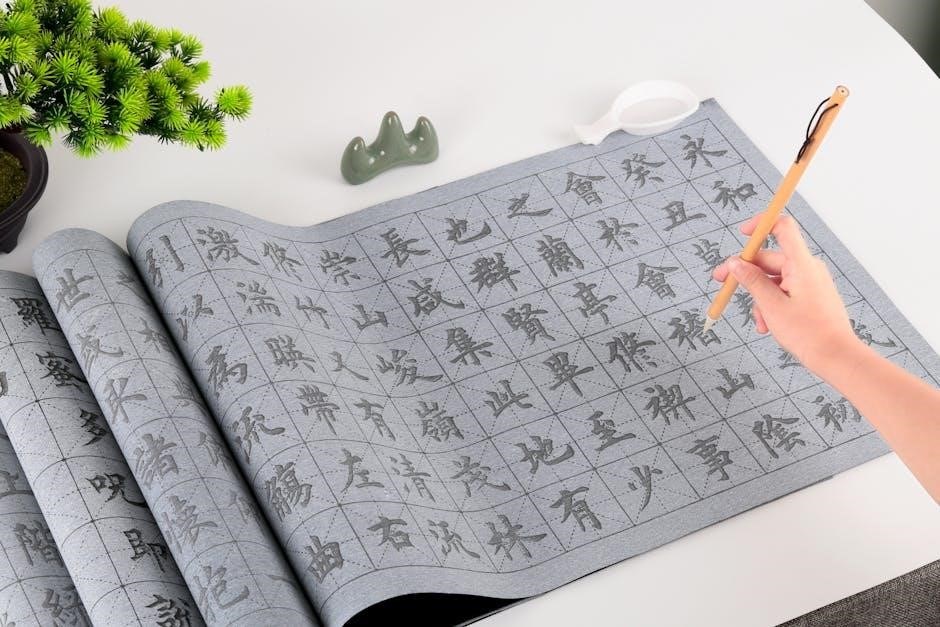Published in 1922, T.S. Eliot’s The Waste Land is a cornerstone of modernist literature, reflecting post-World War I disillusionment and societal fragmentation, while influencing 20th-century poetry profoundly.
Overview of the Poem’s Significance
T.S. Eliot’s The Waste Land is a masterpiece of modernist literature, capturing the disillusionment and spiritual decay of post-World War I society. Its fragmented structure and rich allusions reflect the chaos and alienation of the era. The poem’s exploration of themes like spiritual decay, fragmentation, and the search for meaning resonated deeply with its audience. Its influence on 20th-century poetry is immense, solidifying Eliot’s reputation as a literary giant. The poem’s complexity and depth continue to inspire analysis, making it a cornerstone of modernist studies and a timeless exploration of the human condition.
Historical Context: Post-World War I Society
The Waste Land reflects the profound disillusionment and social fragmentation following World War I. The war’s devastation left society in a state of moral and spiritual bankruptcy, as traditional values crumbled. Eliot captures this era’s alienation and despair through imagery of a desolate wasteland, symbolizing the psychological and cultural decay of the time. The poem’s themes of spiritual decay and fragmented identities resonate with the post-war generation’s struggle to find meaning in a shattered world, mirroring the chaos and disillusionment of the early 20th century.
Modernist Literature and Its Influence
The Waste Land is a defining work of modernist literature, characterized by its experimental form and rejection of traditional narrative structures. Eliot’s use of fragmented imagery, multiple voices, and allusions revolutionized poetry, breaking away from Victorian romanticism. The poem’s nonlinear structure and blending of cultural references influenced generations of writers, reshaping poetic expression. Its innovative style and depth of meaning solidified modernism’s legacy, making The Waste Land a cornerstone of 20th-century literary innovation and a benchmark for poetic experimentation.

Key Themes in “The Waste Land”
The poem explores disillusionment, spiritual decay, and a fragmented society, delving into alienation and the search for meaning amidst the chaos of a post-World War I world.
The Theme of Disillusionment
Disillusionment permeates The Waste Land, reflecting the spiritual and emotional barrenness of post-World War I society. Eliot portrays a world grappling with the collapse of traditional values, where modern life feels devoid of meaning. The poem’s fragmented structure and imagery of decay underscore the sense of alienation and despair. Characters like the hyacinth girl and Tiresias embody the futility of human connection, while allusions to mythology and history critique the emptiness of modern existence. This theme captures the collective disillusionment of a generation lost in a spiritually desolate landscape.

Spiritual Decay and the Search for Meaning
The Waste Land explores the spiritual decay of modern society, depicting a world devoid of genuine faith and connection. Eliot uses imagery like the wasteland and the Fisher King legend to symbolize a land in need of spiritual renewal. The poem reflects humanity’s search for meaning amidst chaos, drawing on religious and mythological allusions to highlight the absence of transcendence. Characters’ struggles, such as the hyacinth girl’s silence, illustrate the futility of seeking solace in a spiritually barren world, emphasizing the need for redemption and renewal in a fractured existence.
Fragmentation and Alienation
The Waste Land vividly portrays fragmentation and alienation through its disjointed structure and multiple voices, reflecting post-World War I society’s disillusionment. Eliot’s use of shattered imagery, such as “a heap of broken images,” underscores the emotional and psychological detachment of modern life. The poem’s non-linear narrative and shifting perspectives create a sense of disconnection, while urban scenes, like the crowd flowing over London Bridge, emphasize collective alienation. This fragmentation mirrors the spiritual barrenness and isolation of individuals in a chaotic, post-war world, leaving readers with a profound sense of existential dislocation.
Structure and Organization of the Poem
The Waste Land is structured into five distinct sections, each exploring different themes through fragmented narratives and imagery, reflecting its modernist experimentation and complexity.
The Five Sections of the Poem
T.S. Eliot’s The Waste Land is divided into five sections, each with unique themes and imagery. “The Burial of the Dead” introduces the wasteland metaphor, while “A Game of Chess” explores psychological tension. “The Fire Sermon” reflects spiritual decay, and “Death by Water” symbolizes rebirth through sacrifice. The final section, “What the Thunder Said,” seeks renewal amidst despair. This structure, blending modernist experimentation with rich allusions, creates a fragmented yet cohesive narrative, mirroring the disillusionment of post-World War I society.
Use of Allusions and References
T.S. Eliot’s The Waste Land is renowned for its extensive use of allusions, drawing from literature, mythology, and religion. References to Shakespeare, Dante, and the Fisher King legend enrich the poem’s complexity, while Buddhist and Hindu texts add spiritual depth. These allusions serve to underscore themes of disillusionment and the search for meaning, reflecting Eliot’s belief in the interconnectedness of cultural and historical experiences. The poem’s layered references create a mosaic of shared human knowledge, emphasizing the universal nature of its themes and the fragmented modern condition.
Nonlinear Narrative and Multiple Voices
The Waste Land defies traditional narrative structures by employing a nonlinear format, weaving together fragmented scenes and voices. Eliot’s use of multiple voices creates a sense of alienation and dislocation, mirroring the chaos of post-war society. The poem shifts between languages and cultural references, further emphasizing its disjointedness. This technique forces readers to piece together meaning, reflecting the modernist experimentation and the fractured human experience central to the work. The absence of a single narrator underscores the poem’s themes of disillusionment and spiritual decay.

Symbolism in “The Waste Land”
The poem employs rich symbolism, with the wasteland itself representing spiritual decay and societal collapse. Eliot uses imagery like water, desert, and the Fisher King legend to convey renewal and despair.
The Wasteland as a Metaphor
The wasteland serves as a powerful metaphor for spiritual decay and societal collapse in the aftermath of World War I. Eliot depicts a desolate, barren landscape, symbolizing a world devoid of meaning and hope. The wasteland represents the fractured human condition, where disillusionment and alienation prevail. Through imagery of dry rivers, lifeless trees, and shattered remnants of culture, Eliot conveys the search for renewal amidst decay. This metaphor encapsulates the post-war era’s moral and emotional desolation, reflecting humanity’s struggle to find purpose in a fragmented world.
The Role of the Fisher King Legend
The Fisher King legend in The Waste Land symbolizes a wounded leader whose impotence mirrors societal decay. His unhealed wound reflects spiritual barrenness, while the quest for the Holy Grail represents the search for renewal. Eliot uses this myth to illustrate the need for healing in a fractured world. The Fisher King’s plight underscores themes of disillusionment and the pursuit of meaning, linking ancient mythology to modern despair and the hope for redemption in a post-war landscape.
Water and Desert Imagery
Water and desert imagery in The Waste Land symbolize opposing forces of renewal and desolation. Water represents purification and spiritual rebirth, as seen in the “Death by Water” section, where it signifies transcendence. Conversely, desert imagery, like the “heap of broken images” and “dead land,” reflects spiritual decay and emotional aridity. These contrasting symbols underscore the poem’s themes of disillusionment and the search for meaning, highlighting the tension between hope and despair in a fractured world.

Allusions and Cultural References
The Waste Land is rich in allusions, referencing Shakespeare, Dante, the Fisher King legend, and Buddhist texts, creating a tapestry of cultural and historical depth.
Literary Allusions: Shakespeare, Dante, and Others
T.S. Eliot’s The Waste Land is densely populated with literary allusions, drawing from works like Shakespeare’s plays and Dante’s Inferno. These references enrich the poem’s themes of disillusionment and spiritual decay. Shakespearean echoes, such as the tragic inevitability in Hamlet, resonate throughout, while Dante’s imagery of hell mirrors the modern wasteland. Eliot’s use of these allusions creates a sense of timelessness, bridging ancient and modern despair. The poem’s layered references underscore the universal human struggle for meaning, making it a masterpiece of intertextual depth and complexity.
Mythological References: The Grail Quest and Buddhism
T.S. Eliot’s The Waste Land incorporates mythological references, notably the Grail Quest and Buddhist teachings, to explore themes of spiritual decay and renewal. The Fisher King legend symbolizes a land in need of healing, mirroring the post-war world’s despair. Buddhist concepts, such as the cyclical nature of life and the pursuit of enlightenment, are reflected in the poem’s search for meaning. These mythological allusions enrich the narrative, offering a universal framework for understanding humanity’s existential struggles and the hope for transcendence amidst chaos.
Historical and Religious Allusions
T.S. Eliot’s The Waste Land is rich in historical and religious allusions, drawing from diverse traditions to critique modernity. The poem opens with a quote from Petronius’s The Satyricon, symbolizing cultural decay, while references to Dante’s Inferno and the Sibyl of Cumae evoke a sense of existential despair. Religious imagery, such as the search for spiritual renewal, reflects Eliot’s exploration of faith amidst societal collapse. These allusions underscore the poem’s themes of disillusionment and the fragmented search for meaning in a post-World War I world.

T.S. Eliot’s Style and Technique
Eliot’s modernist experimentation in The Waste Land features fragmented imagery, allusions, and multiple languages, creating a disjointed yet profound exploration of disillusionment and spiritual decay in society.
Modernist Experimentation
T.S. Eliot’s The Waste Land exemplifies modernist experimentation through its non-linear structure, fragmented narrative, and rejection of traditional poetic forms. By abandoning a cohesive narrative voice, Eliot embraces disjointedness, mirroring the chaos of post-World War I society. The poem’s form, with its abrupt shifts in tone, language, and imagery, reflects the spiritual and cultural disintegration of the era. This innovative approach challenges readers to piece together meaning, creating a work that is both intellectually demanding and deeply resonant.
Use of Multiple Languages and Voices
Eliot’s The Waste Land employs multiple languages and voices to convey the fragmented nature of modern life. The poem incorporates Latin, German, French, and Italian, among others, creating a polyphonic effect that mirrors societal dislocation. These diverse voices, from literary and mythological references to conversational snippets, reflect the chaos of a post-war world. This linguistic diversity not only enriches the poem’s texture but also underscores its central theme of cultural and spiritual disintegration, challenging readers to navigate a multilingual, disjointed narrative.
Fragmented Imagery and Symbolism
Eliot’s The Waste Land is renowned for its fragmented imagery and symbolism, which reflect the spiritual decay and disillusionment of post-World War I society. Images like the “heap of broken images” and “fear in a handful of dust” evoke a sense of desolation and despair. These symbols, often juxtaposed without clear connections, mirror the fractured nature of modern life. The poem’s imagery, drawn from mythology, religion, and literature, creates a layered, enigmatic narrative that challenges readers to piece together meaning from chaos, underscoring the search for renewal in a broken world.
Analysis of Key Sections
Analysis of key sections in The Waste Land explores their unique themes and symbolism, collectively portraying post-war disillusionment and spiritual decay through fragmented narratives and allusions.
“The Burial of the Dead” and Its Significance
The opening section, “The Burial of the Dead,” sets the tone for The Waste Land, introducing themes of disillusionment and spiritual decay. Eliot employs vivid imagery, such as the “heap of broken images” and the “stony rubbish,” to depict a desolate post-war world. The section’s fragmented structure and allusions to mythology and literature, like the Fisher King and Dante, underscore the search for meaning in a fractured society. The use of multiple voices and languages reflects modernist experimentation, while the contrast between life and death emphasizes the moral and spiritual barrenness of the era.
“A Game of Chess” and Its Psychological Depth
This section delves into the psychological turmoil of a troubled marriage, exploring themes of emotional detachment and inner conflict. Eliot uses dialogue and monologue to reveal the tension between the two characters, contrasting their upper-class facade with their spiritual decay. The allusion to Shakespeare’s Cleopatra underscores the emptiness of their relationship, while the recurring motif of silence and unspoken thoughts highlights the alienation of modern life. The psychological depth is further enriched by the interplay of desire, fear, and disillusionment, mirroring the broader societal fragmentation of the post-war era.
“The Fire Sermon” and Spiritual Decay
In “The Fire Sermon,” Eliot explores spiritual decay through vivid imagery and allusions, drawing parallels between modern society and ancient myths. The section critiques the emptiness of materialism and the loss of spiritual connection, reflecting the disillusionment of the post-war era. Eliot’s use of the Thames River as a symbol of both life and decay underscores the moral and emotional barrenness of modern life. The sermon itself, inspired by Buddha’s teachings, serves as a call to spiritual awakening, contrasting sharply with the surrounding moral decay and societal fragmentation.
“Death by Water” and Its Symbolism
“Death by Water” is a poignant section of The Waste Land, symbolizing spiritual decay and transformation. The imagery of water, typically life-giving, here represents death and purification. Phlebas, the drowned Phoenician sailor, embodies the futility of human existence, his fate a metaphor for modern society’s spiritual void. Eliot contrasts the natural cycle of life and death with the moral stagnation of humanity, suggesting that true renewal requires confronting inner emptiness. This section’s brevity and clarity underscore its profound message of inevitable mortality and the search for transcendence.
“What the Thunder Said” and the Search for Renewal
The final section, “What the Thunder Said,” embodies the poem’s search for renewal amidst despair. The thunder’s voice, evoking Eastern religious symbolism, offers hope for spiritual awakening. Eliot weaves imagery of water and desert, contrasting the barrenness of modern life with the possibility of rebirth. The section’s fragmented structure mirrors the chaos of the post-war world, yet its closing lines suggest transcendence. The thunder’s command to “Give, sympathize, control” underscores the need for human connection and self-discipline to escape the wasteland, hinting at redemption and the cyclical nature of life and death.

Legacy and Impact of “The Waste Land”
The Waste Land is a defining work of modernist literature, influencing 20th-century poetry with its experimental form and rich allusions. Its enduring relevance solidifies its status as a masterpiece.

Influence on Modernist Poetry
T.S. Eliot’s The Waste Land revolutionized modernist poetry with its fragmented structure and rich allusions, inspiring poets to experiment with form and meaning. Its nonlinear narrative and multiple voices redefined poetic expression, encouraging a break from traditional techniques. The poem’s use of cultural and mythological references set a new standard for intellectual depth, influencing generations of writers. By challenging conventional norms, Eliot’s masterpiece became a cornerstone of modernist literature, shaping the direction of 20th-century poetry and solidifying its author’s legacy as a pioneering figure in the movement.
Critical Reception and Interpretation
T.S. Eliot’s The Waste Land initially received mixed reviews, with some praising its brilliance and others criticizing its obscurity. Over time, it has been celebrated for its intellectual depth and layered meanings, though its complexity remains a subject of debate. Scholars emphasize its reflection of post-World War I disillusionment and spiritual decay, while others highlight its experimental form. The poem’s allusions and fragmented structure have led to countless interpretations, making it a cornerstone of academic study. Its enduring relevance underscores its status as a masterpiece of modernist literature.
Enduring Relevance in Contemporary Literature
T.S. Eliot’s The Waste Land remains a pivotal work in contemporary literature, its themes of disillusionment and spiritual decay resonating with modern audiences. Its experimental form and rich allusions continue to inspire writers and artists, while its exploration of cultural fragmentation reflects ongoing societal challenges. The poem’s universal themes, such as the search for meaning in chaos, ensure its relevance in addressing contemporary issues like social disconnection and existential crises, solidifying its place as a timeless masterpiece of modernist literature.
T.S. Eliot’s The Waste Land remains a profound exploration of disillusionment and spiritual decay, influencing modernist poetry and continuing to resonate with contemporary themes of cultural disintegration and existential search.
T.S. Eliot’s The Waste Land is a modernist masterpiece, published in 1922, exploring disillusionment and spiritual decay in a post-World War I society. Its fragmented structure and rich allusions to literature, mythology, and religion reflect the chaos and alienation of the era. The poem’s five sections—The Burial of the Dead, A Game of Chess, The Fire Sermon, Death by Water, and What the Thunder Said—examine themes of moral decay, existential crisis, and the search for renewal. Eliot’s use of multiple voices and languages underscores the disintegration of cultural unity, while its symbolism, such as the wasteland metaphor, offers profound commentary on humanity’s spiritual condition. The poem’s influence on 20th-century literature remains unparalleled, cementing its status as a defining work of modernism.
Final Thoughts on the Poem’s Significance
T.S. Eliot’s The Waste Land remains a monumental work of modernist literature, capturing the disillusionment and spiritual decay of post-World War I society. Its fragmented structure and rich allusions reflect the chaos and alienation of the era, while its exploration of themes like moral decay and existential crisis continues to resonate. The poem’s influence on 20th-century literature is profound, and its enduring relevance lies in its ability to mirror humanity’s search for meaning in a fractured world. It stands as a testament to Eliot’s genius and the power of modernist experimentation.




